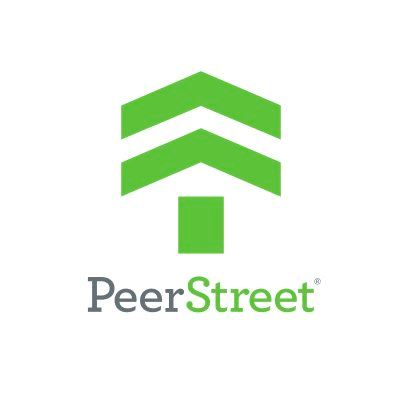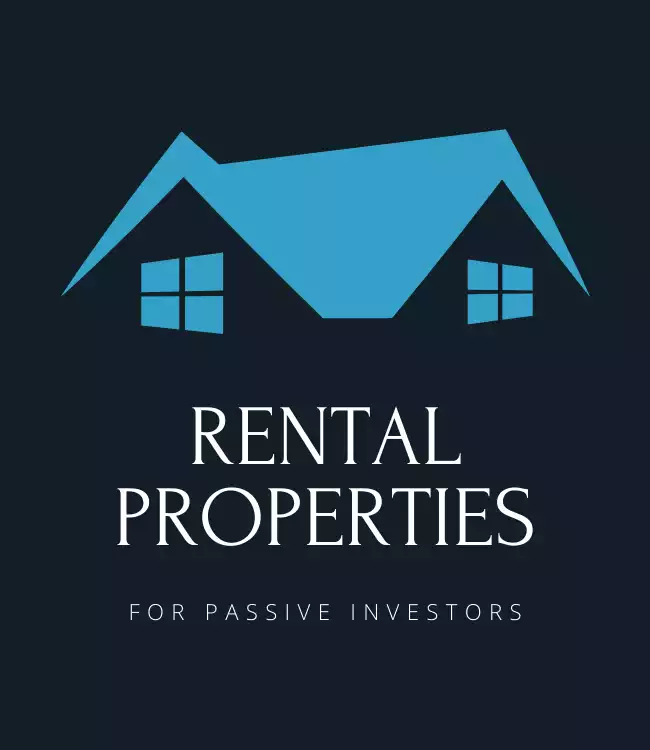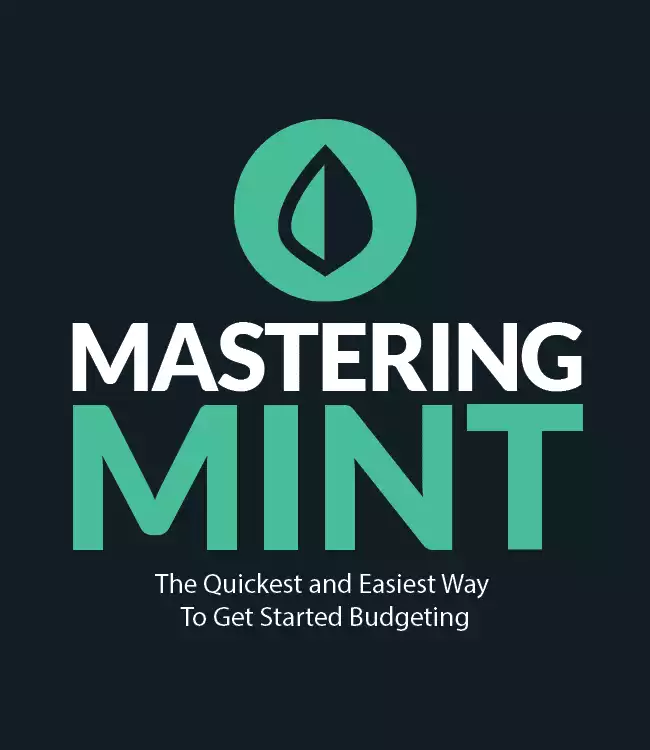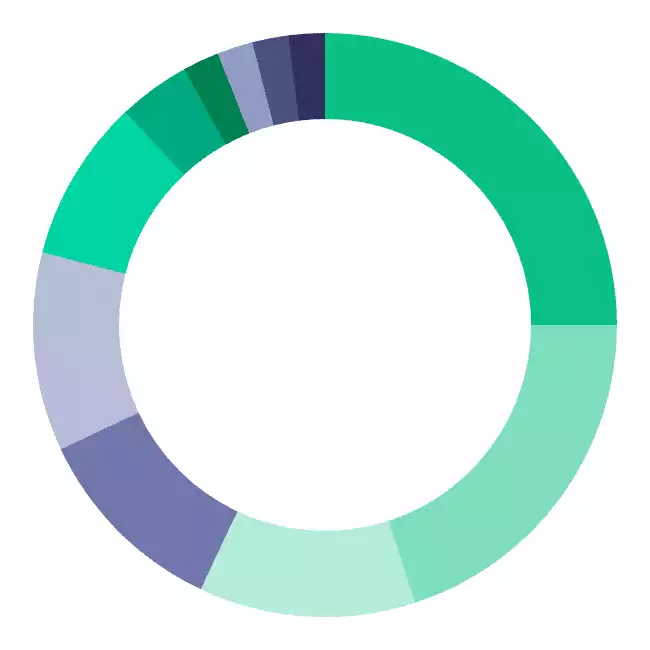- Is anything passive?
- 1. Real estate
- 2. Peer-to-peer lending
- 3. Dividend Stocks
- 4. The wonderful world of ATMs
- 5. Start a blog
- 6. Robo advisors
- 7. Rent a room
- 8. Investing in agruculture
- 9. Write a book
- 10. Buy an online business
- 11. License photos
- 12. Start a podcast
- 13. Self-storage
- 14. Smarten up! (i.e., Get out of debt)
- The Listen Money Matters residual income formula
Over the past few years, there have been epic growth in people seeking opportunities to put more money in their pockets with residual income. And this is great!
This could be because of the explosion of online platforms that allow people to earn residual income and open them to different income sources.
It could be because Americans are seeing record levels of consumer debt. No matter the cause, people find innovative ways to earn residual income.
There are few things in life as beautiful as residual income.
Although it’s easier than ever to earn passive income with online platforms and tools, getting started and figuring out exactly where to start can be overwhelming.
If you screw up your finances, you could be in some long-term pain. So let’s learn how to make more money and do less work.
What is residual income?
Residual income is an income source resulting from cash flow received on a regular and predictable basis, requiring minimal to no effort by you to maintain it over the long-term.
Or, as one of our financial heroes, Robert Kiyosaki, puts it:
My rich dad taught me to focus on passive income streams and spend my time acquiring the assets that provide passive and long-term residual income…income from capital gains, dividends, residual income from business, rental income from real estate, and royalties.
Residual income measures net income after considering all required costs of capital related to generating that income. There are a few key points here.
First, residual income is a predictable and regular income stream. Think of payments that are relatively the exact amounts coming in monthly.
Second, building residual income requires minimal to no effort by you to maintain it…over the long term! This means that you shouldn’t be putting in 20 hours a week to keep that income coming in. That’s a business.
Building residual income must be passive, and there are a lot of opportunities to add this type of income to your financial tool belt. But first, let’s clear a common misconception.
Is anything passive?
Nothing is passive when it comes to earning real money. Yes, passive income ideas have become buzzwords around the personal finance interwebs. However, we don’t want you to get the wrong impression, so we feel like we have to clarify what we mean by passive.
We aren’t talking about those spammy bloggers who assure you that you can earn thousands while you sleep. You need to give them $10,000 for their program, and you’ll be all set. But, yes, they take credit cards.
NOT! There’s no such thing as get-rich-quick schemes; ignore the hype and scammers. And, there are very few examples of entirely passive residual income streams.
The truth is, nothing is really passive. On the contrary, everything requires effort and some hard work front, especially when it comes to finances.
What we mean by residual and passive is that once you have put in the initial effort ( active income), the revenue generated becomes a passive stream of extra cash requiring little to no additional effort.
The key here is to know there is work upfront, and you must do it. Taking action is the most essential skill you can learn to improve your finances.
So, that Uber driving you’ve been doing on the weekends…not passive! That part-time gig as a dog groomer, not passive either. How about that kitten mitten e-commerce store that you set up a few years ago and is now generating a few hundred in monthly income?
You only spend an hour or two a month maintaining the site. Bingo!
Got it? Ok, let’s move on to the good stuff.
Residual income is no longer relegated to stock market dividends, real estate, and royalty cash flow streams. Thanks to innovative digital platforms, more income opportunities exist to turn on the residual income tap.
Let’s look at 14 of the best residual income ideas you can work on now to reap the passive cash flow down the road.
1. Real estate
One of our favorite residual income ideas is probably the oldest: real estate investing.
There are several ways you can tap into the residual income power of owning an interest in real estate; here are a few:
REITs
A real estate investment trust, or REIT, is a publicly-traded company that owns and operates various real estate forms. You can invest these funds directly in your brokerage account.
Fundrise is a crowdfunded platform that allows average investors access to real estate returns they could not access on their own or through a traditional REIT.
Diversify into income-producing real estate without the dramatics of actual tenants. Fundrise eREITs are a diverse family of funds, each of which pursues a focused real estate investment strategy.
Disclosure: When you sign up with this link, we earn a commission. All opinions are our own. I am investing with Fundrise
Their bread and butter are real estate deals overlooked by large institutional investors and out of reach of most individuals.
It’s a great way to grow your net worth with little to no effort.
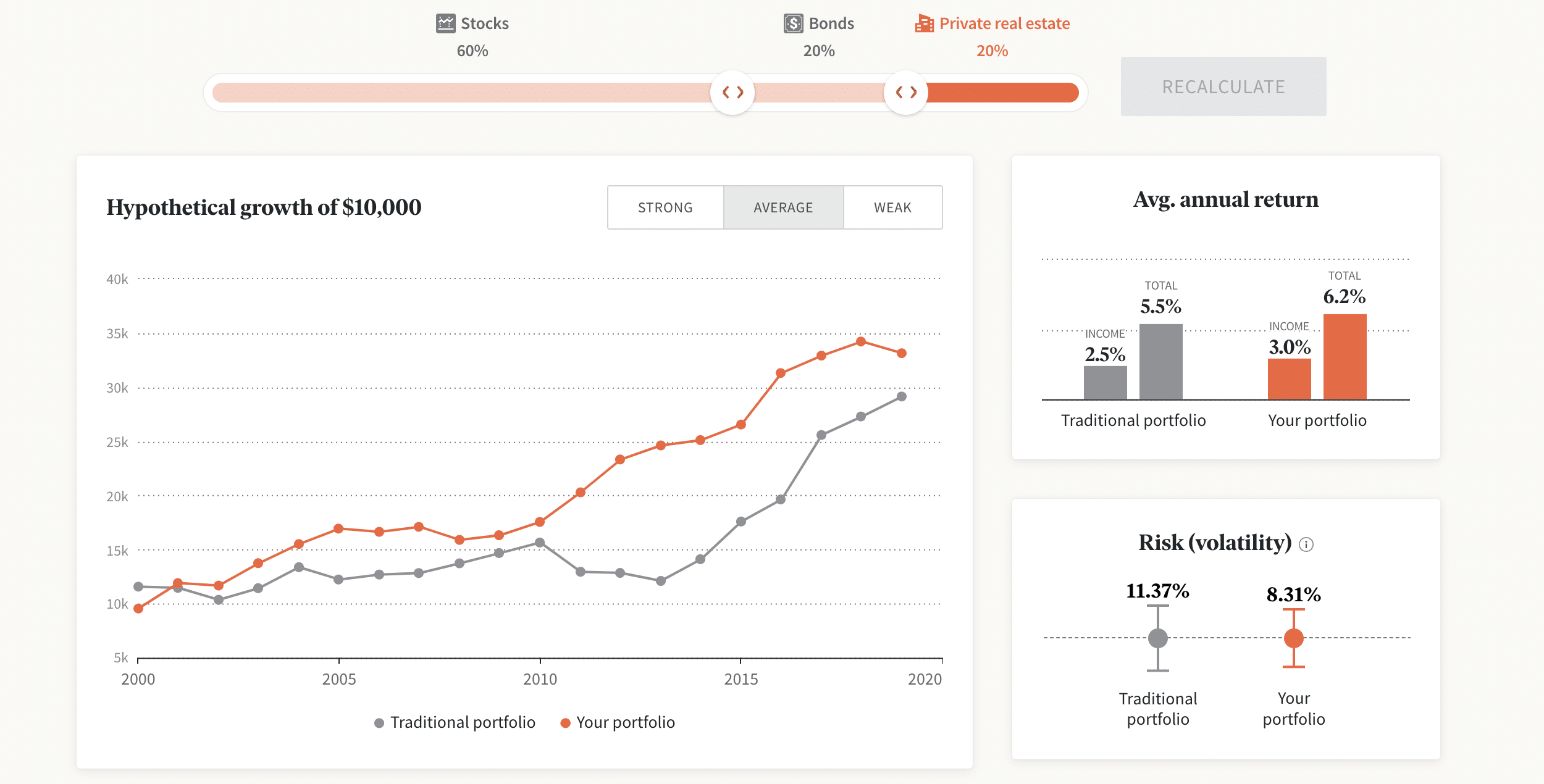
Loans
Don’t want to deal with tenants and toilets? You may want to become a bank. You can use excess cash to loan it out to people who want to do that kind of landlord work.
Platforms like PeerStreet and Patch of Land allow investors to loan cash to real estate projects for future residual income.
Rental property
My favorite way to earn money from real estate is to become a landlord.
You find a significant market in your area, look for a cash-flowing property, buy it, and rent it out.
Sounds easy, right? There’s a lot to this approach, so you have to educate yourself first before buying a
The beauty of this approach is leveraging OPM (other people’s money) to line your pockets down the road.
You put up the initial capital (down payment), borrow the rest from a bank (up to 80%), and then your tenant pays down that loan. Simple as that.
There are dozens of online platforms that allow you to become a direct investor in specific real estate projects either yourself or other investors.
Andrew created a course that focuses exclusively on that investing strategy: Rental Properties for Passive Investors.
You’ll learn his criteria for finding (and closing) the right property, the foundations of a successful rental business, the advantages of shielding your assets with an LLC, and more!
Our proven, data-driven approach to building a portfolio of income-producing rental properties that perform in the long-term.
Check it out here.
Crowdfunding
RealtyShares is an online investing platform that allows you to make real estate investments in a virtual space for companies who need financing for their real estate projects to find investors who will buy shares in that project.
The first makes them like
Flips
A variation of buying a

A little TLC!
You, or a contractor, invest time and money to fix up that property, and then you either rent it out, sell it, or refinance it through a bank to get your initial investment back.
For a detailed discussion of this approach, check out our chat with the fantastic Justin Williams
This is our guide to budgeting simply and effectively. We walk you through exactly how to use Mint, what your budget should be, and how to monitor your spending automatically.
2. Peer-to-peer lending
Yes, you can become a loan shark, but without the prospect of violence. A Peer-to-peer (P2P) loan is a personal loan made between you and a borrower, facilitated through a third-party intermediary such as LendingClub.
There are dozens of platforms that will allow you to loan your money to people or businesses for various purposes.
This can be a personal, business, or real estate loan. You will set the terms of the loan amount of money and then collect interest.
Here are some of the most popular peer-to-peer lender platforms:
A unique alternative investment opportunity in peer-to-peer lending.
3. Dividend Stocks
One of the more stable and traditional forms of earning residual income is to invest in high-quality dividend stocks.
You have to make sure the specific company has a history of raising dividends over the long term.
These payments are then disbursed to you as the stockholder regularly despite the stock’s performance.
This is an index fund of the most consistent dividend-paying companies in the S&P 500. It has historically outperformed the S&P 500 long-term. Over the past 10 years, it has returned 10.98% on an average annual basis whereas the S&P 500 only returned 10.53% during that same period.
Here’s everything you need to know about investing in dividend stocks for residual income.
4. The wonderful world of ATMs
Instead of lending people money, give them the money they already have! ATMs are a great way to earn residual income every time someone withdraws money.
Yes, those fees are SUPER annoying, but they’re earning someone sick residual income. That jerk could be you!
Here is an expert guide on how to get started in the ATM world.
5. Start a blog
Are you passionate about something? Kitten mittens? Dog grooming? Tom Selleck? Then starting a blog might be a great way to create residual income down the road through affiliate marketing.
The strategy looks like this:
- You pick a niche to write about, something you’re passionate about.
- You start your blog and post articles every week for at least a year.
- Once you’ve built traffic to your site, you can monetize it by placing ads or selling a product (like your new eBook!).
Obviously, this strategy is a lot more involved, and you should educate yourself first before jumping into the blog world head-first.
6. Robo advisors
Automate your savings with popular
Robo advisors are the ultimate ‘set it and forget it’ strategy to invest. You choose upfront how much and the frequency, and the platform does the rest.
You choose the types of stocks and funds you’d like your money invested in, and they do the rest. It’s a great way to grow your retirement accounts.
They're perfect for DIY investors who prefer a hands-off approach but can still pick individual stocks and funds. We specifically use them for the Golden Butterfly portion of our portfolio.
7. Rent a room
Do you have a spare room, basement, or office space? You can easily rent that out to vacationers, long-term tenants, or people looking for office space.
For vacationers, it’s best to use platforms like Airbnb and VRBO, and Craigslist for longer-term tenants. If you have an office or a space that can act as an office, check out LiquidSpace, which allows you to connect with those looking for a place to work.
8. Investing in agruculture
Agriculture as an asset class provides passive income and a hedge against inflation, and it’s an attractive investment for a diversified portfolio. These investments provide actual yield derived from naturally produced products with little to no correlation to the overall stock market and lower risk of loss during market corrections. Harvest Invest makes it easy to get started.
We all love coffee, so why not invest in a coffee farm? Companies out there buy coffee farms and then sell out parceled portions of that land to investors. Simple as that.
One of the more popular is International Coffee Farms, which operates in South America. You can buy parcels of land and then collect residual income from harvesting coffee beans on that land.
Coconuts and their by-products are extremely popular these days. I know, I couldn’t live without my strawberry-coconut exfoliating shaving cream!
Manscaping aside, you can invest in agriculture holding companies that buy and manage coconut tree farms.
Similar to the coffee example above, you can invest in a parcel of land within a larger coconut farm and then receive regular residual income as the coconuts are harvested.
9. Write a book
It is now easier than ever to self-publish a book. Whether you want to write fiction or nonfiction, you can write your book professionally edited, formatted, and get a cover design for well under $1000. It’s then free to upload it to Amazon.
How about writing that romance novel and dedicating it to that special someone on Valentine’s Day? VD planning done!
You can even turn your eBook into a physical book with Amazon’s CreateSpace. It’s amazingly easy these days to write and publish a book.
Given we are looking for residual income, make sure the topic you pick is evergreen. That is, if you write a book make sure it will be just as relevant ten years down the road as it is now. This will help you ensure that people will keep buying your book.
10. Buy an online business
If all of this sounds like a lot of upfront work for potential future residual income, this option might be right for you.
Websites out there sell established and often profitable online businesses, including Flippa and Empire Flippers.
Instead of going through the growing pains of starting your own online business, you can simply buy an already established one for residual income.
Do all your research and utilize valuation methods to ensure you’re getting what you pay for.
For more on this, listen to our fun interview with Ace Chapman on buying online businesses.
11. License photos
If you enjoy taking photos and are a good photographer this side hustle is for you. There are websites out there like iStockPhoto that will allow you to license your photos to others for residual income.
12. Start a podcast
But don’t compete with us, we’ll come after you with wooden mallets and colorful language. Kidding! Or are we?
Like starting a blog, a podcast can help you create an audience that can then be monetized through advertising and affiliate marketing.
The key is to pick something you’re passionate about so you can speak intelligently about it and people will listen.
13. Self-storage
Do you like the real estate idea, but don’t want to deal with broken plumbing and whiny tenants?
Self-storage units are a great option to create regular income with a minimal amount of ongoing work.
Many people buy vacant land to build storage units or use their already existing property to build on.
Once the storage units are built, the ongoing effort is minimal, and can even be automated with digital kiosks and smart locks.
The average revenue in the U.S. per square foot for self-storage is $1.42. Not too shabby for an empty space!
14. Smarten up! (i.e., Get out of debt)
Kill all of your consumer debt! One of the biggest challenges facing Americans is their level of consumer monthly debt.
It’s the highest interest, and it can be a drain on your financial and personal resources. Come up with a plan, today, to get yourself back on track.
This is obviously a larger discussion topic, but the best way to help yourself earn extra money in the future is to not pay high-interest rates for consumer debt today.
Tally is your own fee-free, personal debt manager that extends you a line of revolving credit (with a lower interest rate) and helps you pay off debt fast. It scans your linked cards and pays off the one with the highest APR first.
The Listen Money Matters residual income formula
Who doesn’t want some discretionary income? So, here’s the deal. You have a number of solid residual income options above, so now it’s time to take action.
Commit to trying out at least one of these strategies over the next few days, and promise yourself that you will see it through, and if it’s not working for you, then pick a new idea.
Taking action is the hardest part of getting on track and getting on the path to financial freedom.

